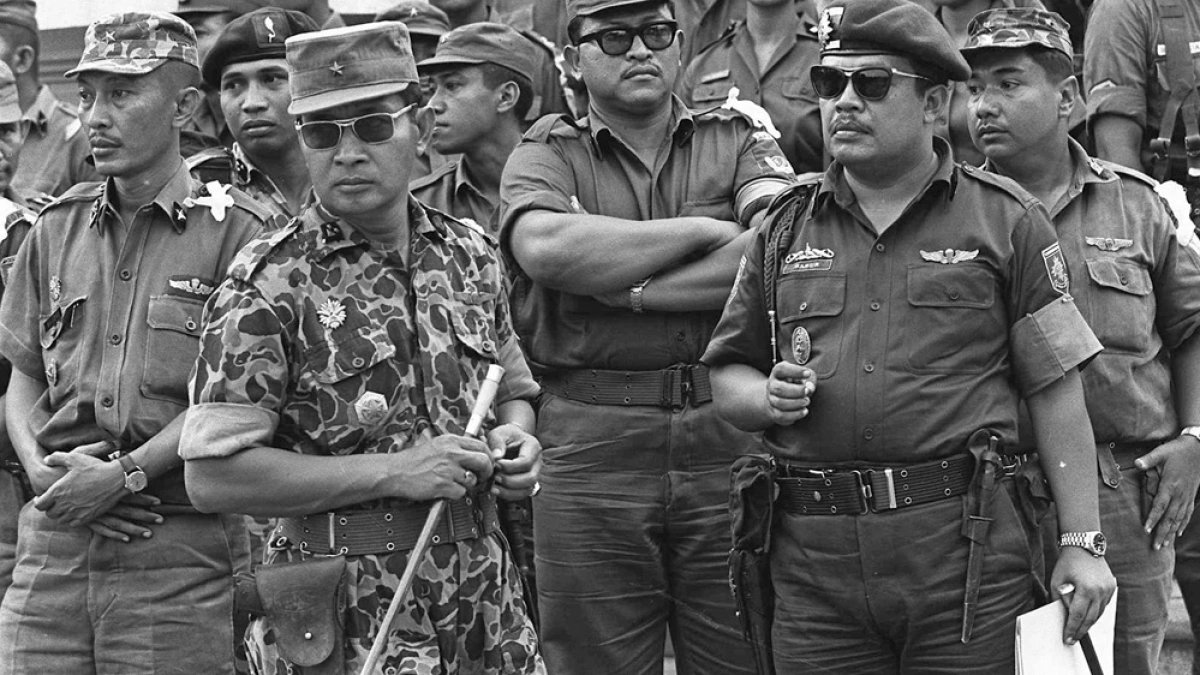The Jakarta Method: The United States and its Legacy of Violence in Indonesia
Image source: Aljazeera
From 1965 through 1966, Indonesia executed a wave of US-backed anti-communist mass killings that reached a death toll of, at least, 1,000,000 civilians. The murders began after a military coup on September 30th, 1965, known as the September 30th Movement or Gerakan 30 September (G30SPKI). On this day, Indonesian military conspirators targeted six superior officers under speculation that they planned a coup against President Sukarno. The officers were kidnapped, tortured, murdered, and had their bodies discarded in an unused well in East Jakarta. The September 30th Movement then became a pretext for the murders of a million innocent civilians under the guidance of General Suharto: a military leader, eventual dictator, and friend of the United States. Suharto moved quickly to use the events of September 30th as a means to consolidate his power and dictatorship–accusing the Indonesian Communist Party (Partai Komunis Indonesia or ‘PKI’) of being behind the murders. Suharto’s campaign and counterattack also targeted the women’s activist group Gerakan Wanita Indonesia (Gerwani), through accusations that the fallen soldiers of G30SPKI were castrated and murdered by Gerwani women. September 30th remains one of many mysteries in Indonesia’s fragmented history–it is unknown who was truly responsible for the incident or why it happened. All we can answer is what it did to Indonesia, and the world, throughout decades to come.
By October 1st, Suharto had taken control of the Indonesian Armed Forces, and in the coming months, led the military-run anticommunist crusade. Suharto had overseen the executions of a million Indonesians accused of being affiliated with the PKI or simply holding leftist sympathy. General Suharto was particularly dexterous in fear-mongering and succeeded in his goal of ideological rivalry, receiving the support of religious groups and enemies of the PKI. The violent aftermath of G30SPKI was not a merely coincidental event in the rise of Suharto–it was a driving force in the emergence and consolidation of his dictatorship. Suharto eventually ruled Indonesia under a dictatorship from 1967-1998, continuing decades-long of systematic violence, discrimination, and corruption.
In The Jakarta Method, Vincent Bevins writes on the involvement and exploitation of the United States in Indonesia, interrogating the extent of aid and support provided by the US to Indonesia’s military. Bevins argues that the US took advantage of Indonesia in its pursuit of preventing the spread of communism and growing its sphere of political influence. Indonesia was not only an ideal playing field for the US to advance its Cold War goals through nationwide violence and intimidation against communism but also allowed Washington an opportunity to target President Sukarno, who publicly established his anti-imperialist and anti-American views. Within this time, Sukarno had grown increasingly hostile to Western interests, making Suharto’s military violence a convenient tactic in weakening President Sukarno’s political authority and power from his allyship with the PKI.
The echo of Indonesia’s anti-communist crusade prevails long beyond 1966, and Jakarta became a worldwide tactic of US-backed political violence. As a result of the American victory in Indonesia, strategies used in the anti-communist purge were replicated in multiple countries allied with the US. The term ‘Jakarta’ became an indicator of military tactics and terror campaigns used against left-wing parties in Brazil and Chile. In Santiago, military intimidation was done by painting “Jakarta is coming.” outside the homes of leftists and accused leftists. In Indonesia, Suharto’s dictatorship upheld a strong dissent against communism, resulting in decades of targeted violence and discrimination, particularly towards Chinese Indonesians, on the grounds of ideological rivalry. His “New Order” regime suffered a violent ending in 1998, following civil unrest, mass violence, and an economic crisis.
References
Bevins, Vincent. The Jakarta Method: Washington's Anticommunist Crusade and the Mass Murder Program That Shaped Our World. Public Affairs, 2021.
---. "What the United States Did in Indonesia." The Atlantic, 21 Oct. 2017, www.theatlantic.com/international/archive/2017/10/the-indonesia-documents-and-the-us-agenda/543534/.
"The Indonesian Killings of 1965-1966." 4 Aug. 2009, www.sciencespo.fr/mass-violence-war-massacre-resistance/fr/document/indonesian-killings-1965-1966.html#title1.
Palmier, Leslie. "The 30 September Movement in Indonesia." Modern Asian Studies, vol. 5, no. 1, 1971, pp. 1-20.

